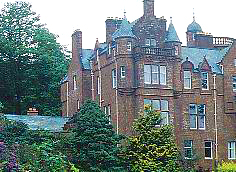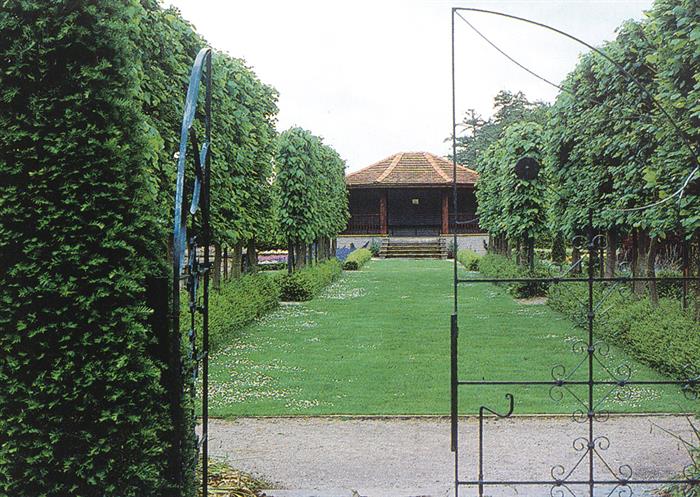Threave: An Unexpected Scottish Garden
 Threave is a striking 60 acre garden, filled with plants and landscape features that you would be more likely to expect in the south of England.
Threave is a striking 60 acre garden, filled with plants and landscape features that you would be more likely to expect in the south of England.
Located in the south west of Scotland, Threave enjoys a milder climate, and avoiding the prolonged cold and rugged mountains that cover most of the country.
Before 1948, this garden was gentle hills covered mainly by woodland. It had been held by the Gordon family since 1872, but Alan, the last of the Gordons, had decided to gift the property to the National Trust of Scotland. Over the past 50 years the Trust has managed and developed the property, as both a teaching and display garden.
Students are actively involved in its design and management, with new areas continually being developed and old areas redeveloped. This tends to keep the garden fresh, vibrant, and always offering something new for the returning visitor.
A large visitor centre contains a shop, restaurant and a range of historical and horticultural displays. The average maximum day temperature in mid-summer is 18.6 degrees Celsius, and the average mid winter maximum is 2.7 degrees Celsius. During winter, a light snow cover is usually they worst they get.
 Some of the major sections of the garden include:
Some of the major sections of the garden include:
- Rose Garden
The best time for roses is July and August. Roses are also under-planted with bulbs, herbaceous plants and low shrubs that provide added colour, particularly when the roses are not in flower. Old fashioned and shrub roses dominate.
- Woodland Garden
The main plantings here are rhododendrons, which are best in May and June. The area is also filled with a wide range of shade and moisture loving bulbs and shrubs; in particular a good collection of Primulas and Mecanopsis.

- Walled Garden
This is a classic kitchen garden that will inspire you with all sorts of ideas of, not only what vegetables and fruits to grow; but how to treat them. For the plant enthusiast, it also displays a good range of unusual, historic and just plain interesting varieties.
- Peat Garden
This is a sloping garden area, protected by the surrounding trees, and created by building terraces with locally cut blocks of peat. The peat is replaced every 10 years. The area is filled with a wide range of low or medium height, acid loving plants, such as dwarf Rhododendrons, Vaccinium, Primula vialii, Gentiana, Pernettya, and Nomocharis. This area looks best in May, but there is something flowering anytime from February to November.
- Rock Garden
Originally an area with natural rock outcrops, the rock garden has evolved over time, not only through planting, but by also adding more rock (mainly to raise areas and improve drainage). Plantings provide an abundance of colour throughout both spring and summer. Plants used in this area include Azaleas, Dwarf Rhododendrons, Phlox, Saxifraga, Lithospermum, a range of spring bulbs, and even annuals to supplement the colour throughout summer.

- Formal Garden
This was developed by students in 1988/89 to include 6 types of garden features: a Knot garden, Raised beds, Rose and Clematis garden, Topiary, Silver and Gold area, and a Parterre.
- Secret Garden
Hidden behind a trellis covered by clematis, this is an set area apart from the rest of the garden, and only accessible via a Laburnum archway. It contains a variety of landscape features and plantings that enlighten and inspire, including rocky outcrops and a dry watercourse, a collection of fuchsias, a sunken garden and a Japanese lantern; to mention only some.
- Conifers
A dwarf conifer collection is situated near the secret garden. It provides one of the best illustrations I have seen of how to properly mix shape, texture and colour of conifers to create a stunning visual effect.
- Arboretum
This is a large area that incorporates a wide variety of trees, both evergreen and deciduous; from conifers to oaks and beech to Sorbus.
- Heather Garden
Located beside (believe it or not) a collection of Eucalyptus, this collection of Ericas, Callunas and related plants is not to be missed. Even when not in flower, the contrasting foliage colours create contrast and interest all year round.
- Orchard
This contains many uncommon varieties, including an interesting collection of 20 varieties of old Scottish Pears, and a collection of old Scottish Apples. These older varieties might not produce fruit to the same standard as modern varieties, but often these older varieties are hardier.
Location:
Threave is near Castle Douglas, off the A75, south west of Dumfries
More from ACS
Ebook - stunning photos, 212 pages covers identification, care, encyclopaedia.
View eBook
Ebook - Inspiring: covers formal, natural, eclectic, modern, oriental, Mediterranean; zoom in on stunning images and plans.
View eBook
Ebook - Explores garden design ideas and inspires
garden design and landscaping!
View eBook
Ebook - Identify, select, grow, care, propagate, landscape,
dictionary of perennials.
View eBook
Ebook -
Classification, care, propagation, containers, pruning, hedges, topiary
landscaping, commercial uses, conifer directory.
View eBook
Course - For even those who have worked in landscaping for some time, but who seek a deeper and broader knowledge of garden renovation.
View Course
Course - For professonal gardeners, those setting up a business or the home gardener.
View Course
Understanding historical styles of gardens, gives you a wider and more solid range of design options.
View Course